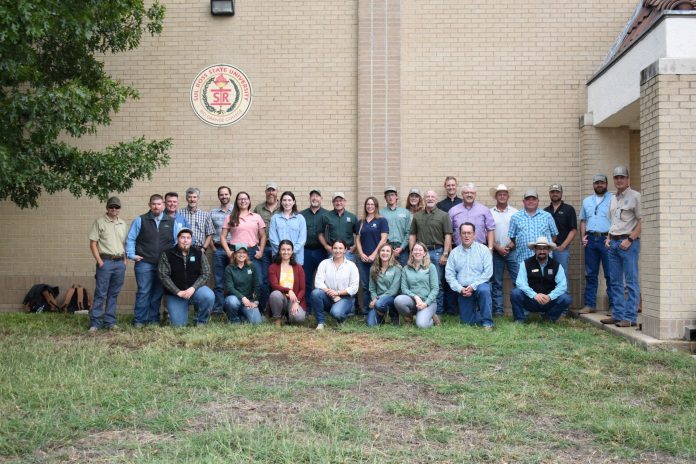
ALPINE Two Texas universities are partnering with state and federal agencies to study the transboundary movements of black bears and mountain lions along the U.S.-Mexico border in Southwest Texas.
The five-year project brings together the Caesar Kleberg Wildlife Research Institute at A&M Kingsville and Borderlands Research Institute at Sul Ross State University in Alpine, along with Texas Parks and Wildlife Department (TPWD), U.S. Fish and Wildlife Service (USFWS), and U.S. Customs and Border Protection (CBP). CBP provided funding to the U.S. Fish and Wildlife Service through an Inter-agency Agreement.
“U.S. Fish and Wildlife is evaluating what, if any, impacts to wildlife movement resulted from prior border barrier construction and possible actions to mitigate those impacts,” Grant Harris, Chief of Biological Sciences for the Southwest Region of USFWS, said in a news release. “We believe that partnering with the science experts who are local to the issues in these regions is the best strategy for obtaining the most accurate data.”
Researchers from both universities are known and respected for producing peer-reviewed, science-based research on the movements and ecologies of large mammals. With a focus in South Texas, Borderlands Research Institute will lead the study on black bear movements and Caesar Kleberg Wildlife Research Institute (CKWRI) will lead the study on mountain lion movements.
“We are pleased to work in collaboration with our Caesar Kleberg colleagues in addition to our state biologists and federal agencies on a project that has relevance for wildlife in Texas,” Louis A. Harveson, the Dan Allen Hughes Jr., endowed director of Borderlands Research Institute (BRI), said in the release. “This project will add to our scientific understanding about wildlife movements along the U.S.-Mexico border.”
The project has four main objectives. The first is to produce a peer-reviewed publication of literature review on the topic of barrier system effects on large mammals. The second is to provide types and amounts of mitigation efforts for government agencies to consider. The third is to promote the recovery of black bears and mountain lions by enacting approved mitigation efforts. Lastly, the researchers will provide a final report to U.S. Fish and Wildlife about the project.
Research teams will work with TPWD biologists and willing landowners to trap and collar mountain lions and black bears along the Texas border.
Research leads from both universities recently hosted an informational meeting about the project for all partners involved. The meeting was well attended by an engaged and supportive group of TPWD regional and district biologists from counties all along the Texas border, as well as USFWS.
TPWD biologists will help the project by connecting interested landowners to the project and providing scat and hair samples of mountain lion and bear, along with other data. The TPWD Nongame and Rare Species Program is also involved in the project.
“As the state wildlife agency, Texas Parks and Wildlife is very interested in understanding mountain lion and black bear ecology in south and west Texas. We know that these animals cross the border, but we do not know how crucial those movements and genetic connectivity may be for their populations. The information gained from this project will be valuable for TPWD as we monitor and assess the status of the two species in Texas,” said Dr. Dana Karelus, TPWD State Mammal Specialist.
The project will help determine how movements and population densities of mountain lions and black bears are affected by the presence of a border barrier system. The project will support multiple master’s and Ph.D. students to gather and analyze data with faculty and researcher support from both organizations.



